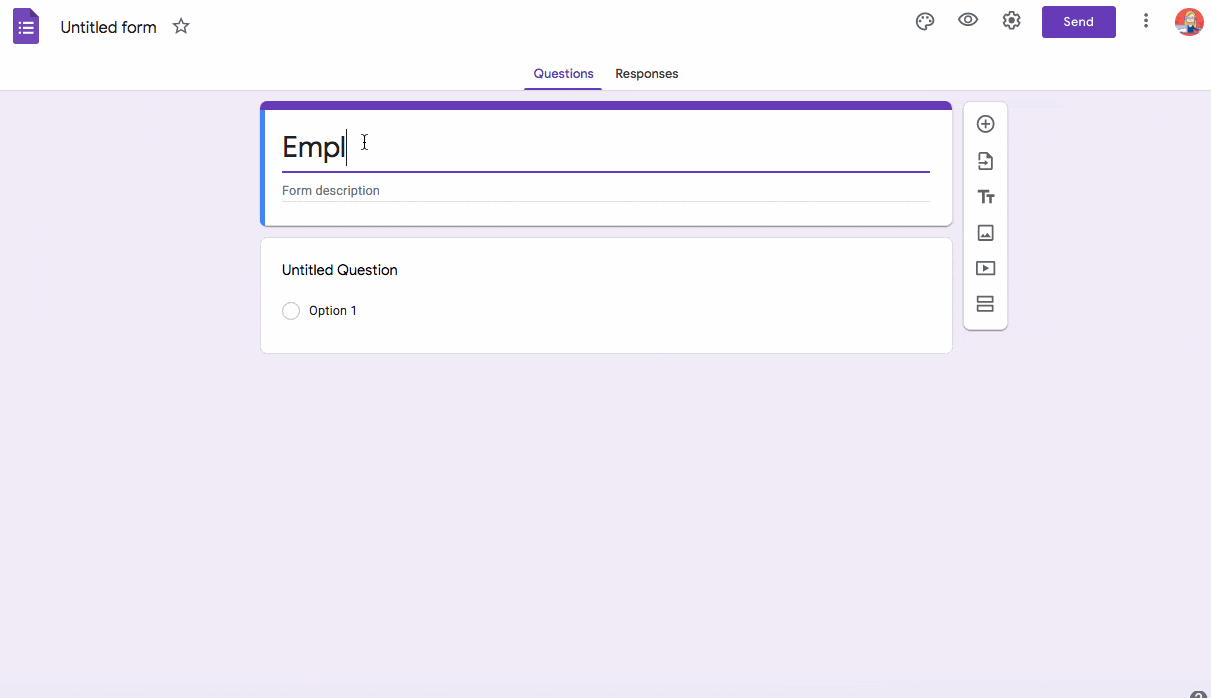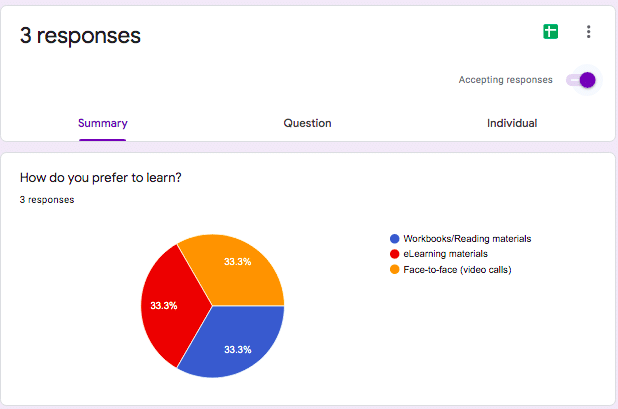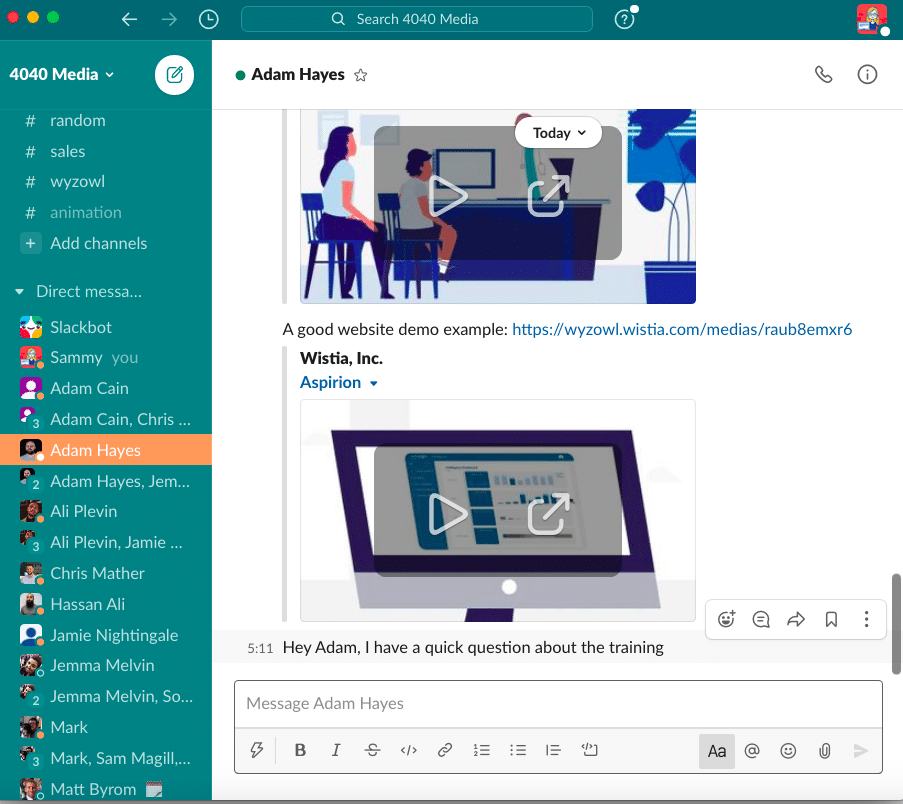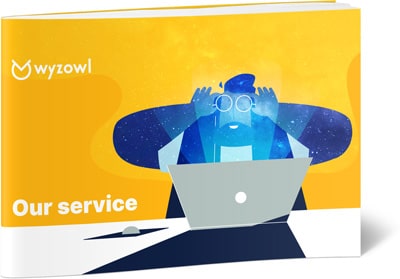Last updated on 10th January 2024
There have been many predictions from all forms of media about what the future would hold.
From the anime TV show Cowboy Bebop predicting we’d have an astral gate that allows for easy and lightning-fast interplanetary travel, to later editions of Do Androids Dream of Electric Sheep?, which predicted off-world colonies and scarily realistic androids.
Well, here we are and none of that is true. Last year began in a way that most people could have never predicted.
The global pandemic that began in late 2019 has forced everyone to adapt to change – in one form or another – and that includes businesses.
In this article, we’re going to take a look at how businesses have had to change the way they operate from a training point of view, and how you might build a new employee training program for 2024.
Training your team in 2024
When the COVID-19 pandemic was at its worst, most companies around the world – including Wyzowl – were forced into a new way of working, practically overnight.
According to a survey by Gartner, 82% of company leaders allowed employees to work remotely during the pandemic, at least some of the time.
And now that the threat has decreased, some companies have decided to choose this time to make the permanent leap from an office-based to a work-from-home environment.
One of these companies is Spotify, who introduced “My Work Mode” for their employees in a statement released in February 2021.
My Work Mode grants Spotify employees more flexibility over where they work, with the ability to work from home, split their time between the office and their home, and even work in a co-working space (paid for by the company) if they don’t live within travelling distance of a Spotify office.
With such fundamental structural changes being made to their business, it’s highly likely that Spotify has had to re-think their employee training program going forward – and perhaps you’re in the same position.
Employee training used to be done in classrooms but in the future it’s more likely that training will take place remotely. It’s important to keep that in mind when building a new employee training program for 2024.
Here are 5 steps that can help you get started.
1. Talk to your employees
The most important factor in your employee training program is your employees themselves.
After all, these are the people that are going to be taking part in the training and benefiting from it, so it’s important to talk to them and get an understanding of their wants and needs.
When working remotely this can be difficult, you can’t just gather everyone in the boardroom and bounce around ideas.
Instead, why not send out a company survey that asks your employees what they would want from a training program?
This is quick, easy, and free (if you have a google account) with Google Forms. You can use a form template or create your own from scratch:

And the tool makes it very easy to build out your survey in a matter of minutes. You can add new questions, and change the formatting of questions, in just a couple of clicks:

It’s easy to send your completed survey to your team and responses can be collected anonymously, so your employees can be comfortable answering the questions honestly.
There’s even a backend to the tool that visually presents all of the data you’ve collected:

So it’s easier to make informed decisions on your new employee training program, safe in the knowledge that you’re investing in training your employees want and need.
2. Establish your training goals
Talking to your employees is a great way to gather information and establish the best goals for your training program.
Setting goals and objectives is important for ensuring you get the most out of your training program, and for tracking its success.
Goals can be both company-wide and individual, but the main thing is that all of your training goals are aligned with your business goals.
Examples of company-wide goals include:
- Boosting employee performance
- Increasing productivity
- Closing skills gaps
Whereas, individual employee or team goals may look like this:
- Increase leadership skills (management team)
- Boost confidence (sales team)
- Gain proficiency in X software (design team)
Depending on your most pressing company-wide goal, you can overlap the two. So, if you have a company-wide goal of increasing productivity and profitability then maybe your individual goals will be more focused around gaining proficiency in certain tools and completing projects faster.
If you want to focus on increasing retention and team relationships as a company (something that will become more important if your team is now working remotely) then you may want to consider focusing on culture training.
Your training goals can be switched out as and when you need to – perhaps every quarter – to ensure your entire team is always pushing forward towards achieving your company goals.
3. Choose the best training method for your team
When it’s time to put your training into action, there are lots of different methods to choose from. It’s important to choose the best training method for your team. Let’s compare some of them…
Classroom training
As previously mentioned, classroom training is likely to become a relic of the past now that so many teams are working remotely.
However, thanks to video conferencing tools like Zoom and Google Meet you may be able to make virtual classroom training work.
Classroom training typically involves activities and workshops that ensure everyone in the team gets a hands-on learning experience. Also, because the training takes place in real time, employees are free to ask any questions they might have.
However, classroom training can be difficult to manage logistically as everyone needs to be available at the same time, on the same day.
Online training
Online training is great because it can be done by your employees in their own time. Not only that, online training materials – such as videos, quizzes, and eLearning modules – are extremely cost-effective because they’re reusable.
This could explain why 57% of L&D pros expect to spend more on online learning globally in the future.
Videos are among the best online learning tools to create because they’re engaging and memorable.
Here’s an example of a training video we created for Nikwax:
According to our recent employee training survey, 90% of people feel that video is an effective tool for training.
Buddy training
Buddy training is perfect for new employees, or employees that are moving into a new role. Being shown the ropes by a “buddy” is a great way to integrate new people into your employee culture, and also a way for employees to pick up anecdotal techniques from the predecessor that may not be covered in traditional training.
Of course, buddy training isn’t ideal for remote teams. However, it could still be implemented through regular video chats.
Want to find out more about different training methods? Read our article: 7 methods for insanely effective employee training
4. Cover all areas of employee training
When building an employee training program it’s important to think about all aspects of your business.
Training doesn’t just relate to the skills required to do your job. There are lots of different types of employee training that you need to consider. Let’s take a look at some…
Onboarding
Onboarding is important for ensuring new hires start their journey with your company in the best way.
After all of the time and effort you put into hiring, it’s vital that your onboarding eases new employees into their new role confidently to give them the best chance of having a long-lasting and happy career with your business.
Here’s an example of an onboarding video from Google:
Compliance training
Compliance training is the process of educating your employees around the rules and regulations that impact their roles.
This is extremely important as if an employee makes a mistake that goes against these rules and regulations then they could get themselves and your company in a lot of trouble.
Culture training
When employees are a good culture fit for your business, they’re more likely to develop better relationships with coworkers and be more productive.
Culture training is something that should be offered to all new employees. Here’s an example from Netflix:
However, culture training is also something that you should continually work on with regular recaps and initiatives. Here’s a recent example from an ASDA mental health campaign:
Customer service training
If you work in a B2C industry then customer service training should be a pillar of your employee training program.
Happy customers are so valuable to your company and can even go on to become your best supporters, bringing in even more customers through referrals.
Initial customer service training should take employees through scenarios they might encounter in their role (like the Nikwax video does) and help them to navigate these correctly.
Customer service training should also be revisited on a regular basis to ensure that your employees are always doing the best they can for your customers.
Sales training
Your sales team will need specific training that relates to their role of bringing in new clients and maximising every opportunity.
Sales training focuses on improving your team’s skills and knowledge but also on capitalising on past successes – when you find out what techniques work best to win your clients you can share this with the entire team to improve everyone’s performance.
Management training
Managers also need specific training to help them hone and improve their skills as a leader.
Management training encompasses everything from communication skills (to help with motivating team members and empathising with employees’ issues) to business-related tasks, such as how to acquire the best talent or implement a performance review.
5. Review your training
After building and rolling out your employee training, you should review it to see how successful it was. From there, you can decide whether it needs to be tweaked or updated.
You can review your training by rolling out another anonymous survey to understand how your team felt about it.
You can also, if you use tools like video, gain access to analytics that will show you exactly how your employees interacted with your training materials. You’ll be able to see if they watched the video all the way through, and how many times.
Interactive video is even better for drilling into important data as it allows you to view the path each employee took, including what hotspots they clicked on.
You can visit our dedicated interactive video company page for more information.
3 Top tips for employee training in 2024
1. Make it engaging
After spending a lot of time, effort, and money on training materials, you need to make sure that your employees actually pay attention to them and retain the information.
The easiest way to do that is to utilise fun and engaging tools, like videos, that your employees will actually enjoy using.
The more engaging your training is, the more memorable it will be!
2. Make it personal
When it comes to training, there is no “one size fits all.” Your teams will have different training requirements depending on their roles. For example, the sales team won’t require management training and the management team won’t benefit from sales training.
Consider each department individually when you build out your new employee training program for 2024.
3. Facilitate open communication
Your employees should always feel safe to ask questions throughout the training process. This way, they can ensure they understand the learning materials and can perform well in their role.
Encourage your employees to ask questions, even if you aren’t in the same room. An instant communication tool, like Slack, is a great way to drop someone a quick message:

Final thoughts
Despite the changes your business has gone through in the past – or will go through in the future – one thing remains true: to effectively train your employees you need engaging tools that facilitate their learning in a fun and memorable way.
Employee training videos can help you do this. Training videos are cost-effective. They ensure consistent messaging. And they can be utilised by your team anytime, anywhere.
To find out more and take a look at some examples, check out our training videos page.







